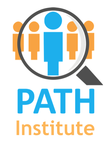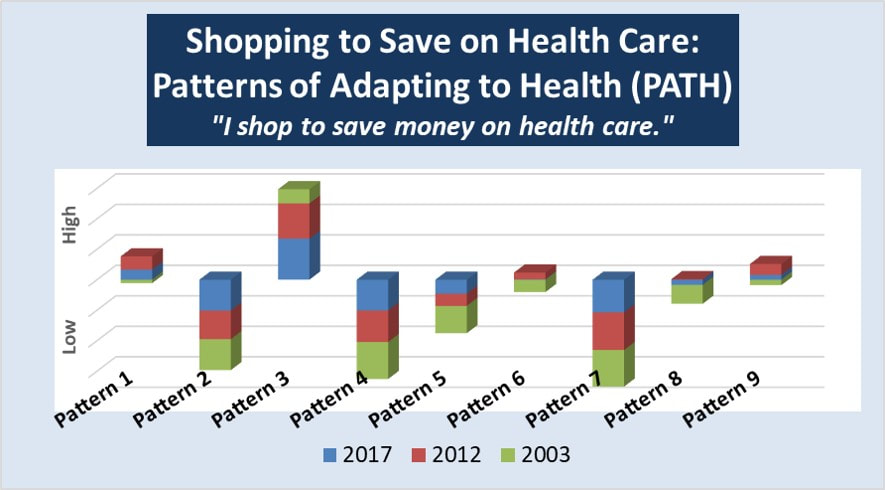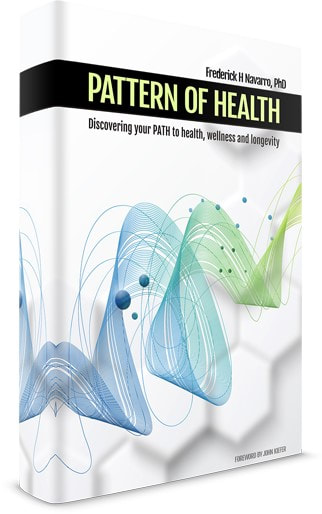|
A person’s likelihood of shopping and comparing health care providers and insurers to save money is strongly and reliably predicted by their level of conformity to the Patterns of Adapting to Health (PATH).
Three separate studies from 2003, 2012, and 2017 show that as adult health behavior increasingly conforms to Patterns 2, 4, and 7 their tendency to ignore the cost implications of health care has remained strong in spite of increasing costs. Adults conforming to these patterns of adapting to health appear to be unaffected by the rising costs of health care with no change in their tendency to ignore the cost implications of their care. However, as adults conform to Pattern 3, health care shopping behavior has gotten stronger. Adults conforming to this pattern of adapting to health showed greater attention to the cost of health care and increasing shopping behavior as the cost of health care increased between 2003 and 2017. Interestingly, adult’s conforming to Patterns 4 and 7 are the most frequent seekers of health care and generate the greatest medical expenditures. The health care demand associated with these two patterns can’t be discounted as a factor, even if only a minor one, supporting continued health care cost inflation.
0 Comments
Leave a Reply. |
AuthorFrederick H. Navarro, PhD. Archives
March 2019
Categories |
|
Copyright © 2017 PATH Institute
|
Website by RyTech, LLC
|


 RSS Feed
RSS Feed

